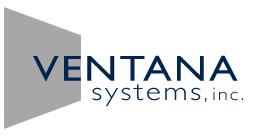California GHG Reduction Policy Collaboratives
Ventana facilitated the California GHG reduction (AB32) Policy Collaboratives, sponsored by industry and supported by the Air Resources Board, the California Energy Commission, and other agencies, with active environmental NGO participation. These analytically-driven workshops have produced key policy insights on
- AB32 Policy and the Low Carbon Fuels Standard
- Crude Oil Flows
- Combined Heat and Power
- Diesel Fuels
- Offsets
- Western Climate Initiative
- Canadian Oil Sands
Though based in California, this process has tackled most of the major issues faced by US national energy policy, with some breakthrough insights. In one example, the Crude Flows Collaborative produced deep discussion among all parties around data on the carbon foot print of different sources of crude oil. Once set in the context of sources of emissions, and flows into and within California, this discussion resulted in a turnaround consensus in favor of a single value for all crude, significantly simplifying regulatory complexity. The decision also greatly minimized the potential for leakage, where heavier crude is transported out of California, increasing overall global emissions.
Workshop design and process
To facilitate this process, Ventana developeded high-level, real-time models of the transportation and electric power sectors and alternative fuels policy. The models helped during the collaborative workshops to develop a deeper understanding of the impact of regulation approaches on climate outcomes and energy supply. Together these models provide a complete policy impact analysis capability for any state, or region, or at the national level.
Workshops are typically a two-day event involving participants from industry, government, and interested non-governmental organizations. The discussions are structured around group examination of salient historical data, and discussion of the cause-and-effect dynamics behind relevant model simulations run real-time during the workshop.
Insights and questions
Ventana experience in the California and Copenhagen 2009 (COP 15) processes is central to assisting in intelligent guidance of US policy on climate, particularly as it relates to the task of economic stabilization. The current economic and political landscape reinforces industry’s interest in good decision making. Momentum in California is toward a mix of policies that largely ignore major sectors (residential and commercial emissions, for example), have high transaction costs (minor command and control options), have high absolute costs and coordination problems (the LCFS), fail to match marginal costs across sectors (transport fuel LCFS vs. electric power cap & trade), and fail so far to adequately address key driving forces (vehicle miles traveled, population growth). The broader concept of Green Silicon Valley and attendant jobs creation is only notional; it has not been clearly articulated in analyses or models.
The LCFS is intended to create incentives for innovation, but there is no formal understanding of how that might actually occur, or how to make it happen in California vs. importing it from China. The process of addressing these issues is through inclusive collaboration, backed up by data-driven analysis with simple models. It is compelling and produces key policy insights. For example, in the current WCI process every major issue is examined around disparity in energy intensity among partner States and Provinces, attendant issues of allocation, and transport fuels under the cap.
Presentation of the transparent, interactive tools and the results of learning in California and Copenhagen comprise a powerful approach to resolve issues of complex system regulation and enable decision makers. House Energy and Commerce Committee Chairman John Dingell’s (D-Mich.) and Energy and Air Quality subcommittee Chairman Rick Boucher’s (D-Va.) 461-page bill seeks to cut greenhouse gas emissions by roughly 80 percent over the next four decades. Environmental groups are criticizing the bill, which Dingell and Boucher refer to as a discussion draft, for delaying dramatic emissions reductions until after 2020 supporting concerns for an underachieving outcome for COP 15.
The California Air Resources Board (CARB) has acknowledged (as of November 10, 2008) they will be taking more time to analyze methods of implementing Cap & Trade having so far failed to reach consensus. In addition many policy questions in the implementation of the Low Carbon Fuels Standard and AB32 remain. The resolution of these questions, with Ventana contribution as a central, analytically-based moderator, will complete effective preparation for the US debate. These developments are indicative of a general problem with policy processes: they run backwards, with broad ideas (emissions targets and choice of policy instruments) set in stone early, without benefit of significant strategic analysis, then jumping to implementation guided by models that support detailed planning without recognizing uncertainty and the need to adapt. Thus much time and money can be wasted, as fundamentally unworkable ideas are pursued to completion, as was the case with California’s foray into electric power restructuring.
Ventana is building a portfolio of dynamic behavioral models that place strategy first. The portfolio surrounds the energy-environment-economy space to help guide policy at the US Congressional level and help in the on-going California and WCI GHG emission reduction policy design process.
